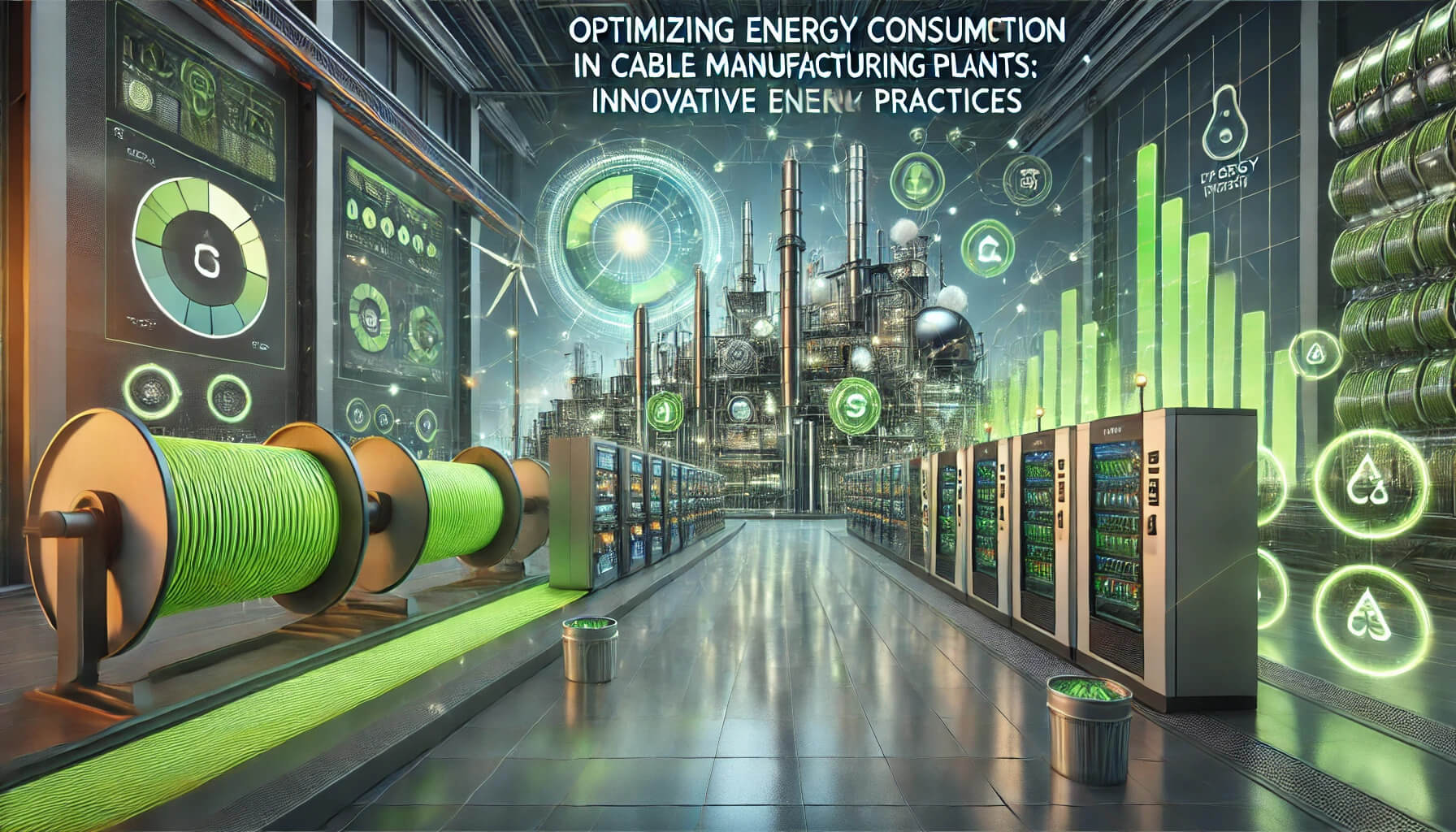
Optimizing Energy Consumption in Cable Manufacturing Plants: Innovative Best Practices
March 20, 2025
The cable manufacturing industry is energy-intensive, with processes such as metal refining, extrusion, insulation curing, and quality testing requiring significant power. Rising energy costs and stringent environmental regulations are driving manufacturers to adopt energy-efficient technologies and sustainable production methods to reduce consumption without compromising output quality.
By integrating AI-powered energy management systems, renewable energy sources, and smart grids, companies like Ducab are leading the way in sustainable cable manufacturing, optimizing efficiency, cost savings, and environmental responsibility.
1. Understanding Energy Consumption in Cable Manufacturing
Cable production involves multiple high-energy processes, including:
- Metal Processing: Refining and drawing copper and aluminum conductors.
- Extrusion & Insulation: High-temperature operations to coat and protect conductors.
- Curing & Cooling: Cross-linking and water cooling for insulation stabilization.
- Testing & Quality Control: High-voltage and mechanical stress testing to ensure product durability.
These processes require continuous energy supply, making optimization crucial for cost and environmental impact reduction.
2. Key Strategies for Energy Optimization
Manufacturers can implement several best practices to enhance energy efficiency in cable plants.
a) AI-Driven Energy Management Systems
- Machine learning algorithms analyze power consumption patterns and suggest efficiency improvements.
- AI optimizes machine runtime, reducing idle power consumption during low-demand periods.
- Predictive analytics forecasts energy usage, preventing power wastage.
b) Smart Grids for Optimized Power Distribution
- Smart grids automatically adjust power allocation based on real-time demand.
- AI-powered energy meters track consumption and detect inefficiencies.
- Load-balancing systems prevent energy spikes and stabilize voltage distribution.
c) Renewable Energy Integration
- Solar panel installations reduce reliance on grid electricity and lower operational costs.
- On-site wind turbines supplement factory power requirements.
- Energy storage solutions capture excess renewable energy for peak-demand usage.
d) High-Efficiency Machinery and Process Automation
- Energy-efficient extruders and curing ovens reduce power consumption.
- Variable speed drives (VSDs) optimize motor performance and lower energy waste.
- Automated shutdown protocols ensure idle machinery does not consume excess power.
e) Waste Heat Recovery Systems
- Heat exchangers capture excess thermal energy from extrusion and curing processes.
- Recovered heat is reused for water heating, space heating, or powering auxiliary systems.
- Steam recovery systems recycle heat from industrial processes, reducing overall power use.
By adopting these strategies, cable manufacturers can significantly reduce energy consumption while maintaining high productivity levels.
3. Ducab’s Commitment to Energy-Efficient Manufacturing
As a leader in sustainable manufacturing, Ducab Sustainability focuses on energy-efficient production practices, including:
- AI-powered energy management solutions for real-time monitoring.
- Investments in solar power and renewable energy adoption.
- Waste heat recovery systems to optimize thermal efficiency.
- Energy-efficient insulation and extrusion technologies to reduce power demand.
These initiatives align with global sustainability goals, ensuring long-term environmental and economic benefits.
4. Challenges in Implementing Energy Optimization
Despite its advantages, adopting energy-efficient solutions in cable manufacturing presents challenges:
a) High Initial Investment Costs
- Advanced AI systems, smart grids, and energy-efficient machinery require significant upfront investment.
- However, long-term cost savings from lower energy bills justify these expenditures.
b) Integration with Legacy Systems
- Older factories may require equipment upgrades to support smart energy management.
- Gradual implementation helps transition to modern, efficient systems.
c) Renewable Energy Reliability
- Solar and wind energy output fluctuations can impact factory operations.
- Hybrid energy solutions with battery storage and grid backup ensure stable power supply.
By overcoming these challenges, manufacturers can fully leverage energy-efficient technologies for sustainable growth.
5. The Future of Energy Optimization in Cable Manufacturing
As technology advances, energy-efficient innovations will continue to shape cable manufacturing:
a) AI-Powered Predictive Energy Optimization
- AI will autonomously adjust factory energy usage based on real-time demand.
- Self-learning energy grids will maximize efficiency without human intervention.
b) Blockchain for Energy Tracking and Transparency
- Blockchain technology will enable secure, verifiable energy usage tracking.
- Decentralized energy trading will allow factories to buy and sell excess renewable power.
c) Hydrogen-Powered Manufacturing
- Hydrogen fuel will emerge as a clean energy source for cable production plants.
- Zero-emission manufacturing processes will enhance sustainability.
These innovations will further drive efficiency, cost reduction, and environmental responsibility.
Conclusion:
Optimizing energy consumption in cable manufacturing plants is essential for cost reduction, operational efficiency, and sustainability. By integrating AI-driven energy management, smart grids, renewable power, and waste heat recovery, manufacturers can achieve significant energy savings while maintaining high production standards.
Companies like Ducab are leading the way by investing in green energy solutions and AI-driven process optimization, ensuring a sustainable, energy-efficient future for cable production. As technological advancements continue, the industry will see even greater improvements in efficiency, cost-effectiveness, and environmental impact.
FAQs: Energy Optimization in Cable Manufacturing
1. How can AI help reduce energy consumption in cable manufacturing?
AI analyzes real-time power usage, predicts inefficiencies, and optimizes machine operations, reducing unnecessary energy consumption.
2. What role do smart grids play in energy efficiency?
Smart grids dynamically distribute power, preventing overloads, stabilizing voltage, and ensuring optimal energy usage.
3. Why is renewable energy important for cable manufacturing?
Solar and wind power reduce dependence on fossil fuels, lowering operational costs and carbon footprints.
4. How does waste heat recovery improve energy efficiency?
Heat recovery systems capture and reuse thermal energy, reducing the need for additional power sources.
5. How is Ducab optimizing energy use in its cable manufacturing plants?
Ducab integrates AI-driven monitoring, renewable energy solutions, and waste heat recovery systems to enhance energy efficiency and sustainability.











